Pantelleria has a way of pulling very different lives into the same orbit. This wind-brushed crescent of volcanic rock in the Mediterranean sits closer to Tunisia than to Sicily, and its landscape of black stone terraces, dammusi homes, and low, bowl-trained vines shapes everything from architecture to what ends up on the plate. In this post I’m weaving together two lives that touched Pantelleria—Giorgio Armani and Ugo Ponzi—and the island’s essential foods and wines that speak its language of restraint and character.
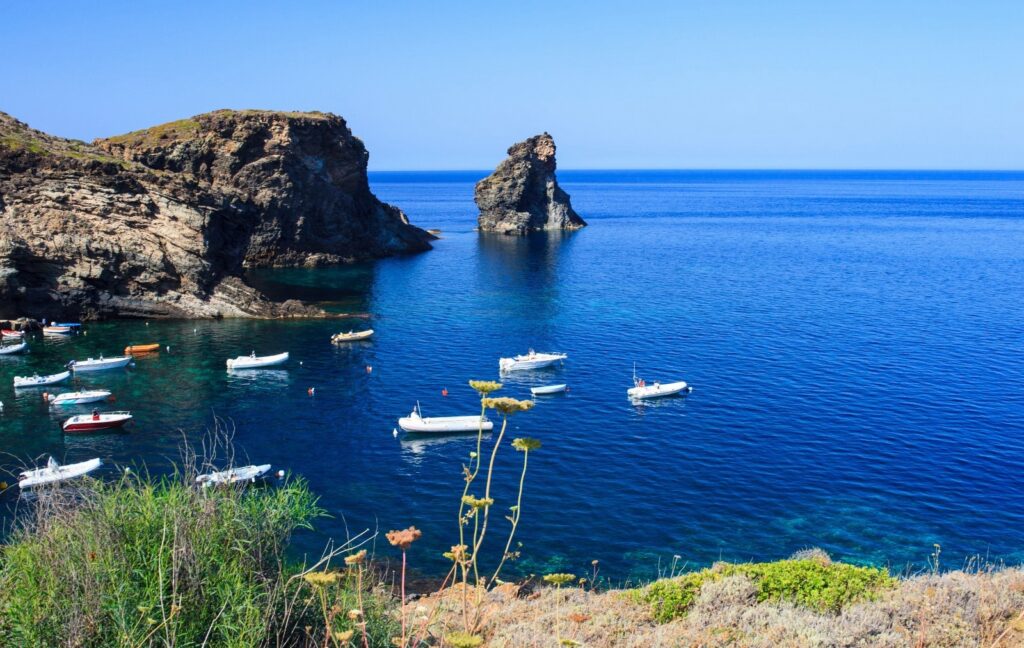
Where is Pantelleria?
If you’re new to Pantelleria, it lies in the Strait of Sicily, about 100 km southwest of Sicily and roughly 60 km east of Tunisia. The island is compact—about 83 km² (32 square miles)—and ringed by coves rather than broad sandy beaches, with terraced hillsides and a peak rising over 800 meters.

Giorgio Armani, Ugo Ponzi, and Pantelleria
Giorgio Armani didn’t follow fashion trends; he rewired expectations of how clothing should behave on the body. His lifelong affinity for Pantelleria makes sense: the island teaches you what you don’t need. Water is scarce. Winds are constant. Homes sit low and thick; vineyards crouch to survive; foods are salted, dried, and preserved so that flavor concentrates. Elegance here is never decoration—it’s fitness to purpose.
Our friend Ugo Ponzi—a quietly brilliant aerospace engineer—embodied the same essentialism. Italy’s path into space is older and more robust than many realize; in the 1960s, Italy became the third country to carry out a satellite launch with its own team, and Ugo Ponzi stood within that tradition of curiosity and meticulous craft. For him, Pantelleria was family and continuity; for Armani, devotion to place. Different lives, one island thread.
Pantelleria at the table: Insalata Pantesca
If you want to meet Pantelleria quickly, make Insalata Pantesca—Pantelleria salad. Waxy potatoes hold their shape; red onion softens under oil and vinegar; ripe tomatoes bring sun and juice; black olives add richness and a faint bitterness; and salt-cured capers from Pantelleria deliver the pinpoint burst that makes the bowl sing. Dress generously with extra-virgin olive oil, a splash of red wine vinegar, oregano or marjoram, and pepper. Warm or room temperature is perfect. A handful of quick-fried capers scattered on top turns each bite into a tiny, crisp firework.
Why Pantelleria capers taste different
Capers grow throughout the Mediterranean, but Pantelleria capers have a distinct personality thanks to volcanic soils, dramatic day–night temperature swings, and traditional salt-curing. Salt packing pulls out water and concentrates floral, briny, umami-rich flavors. A teaspoon of chopped capers can make a simple pan sauce feel finished and intentional. It’s not just salt—it’s umami, acid, and the memory of stone and sun.
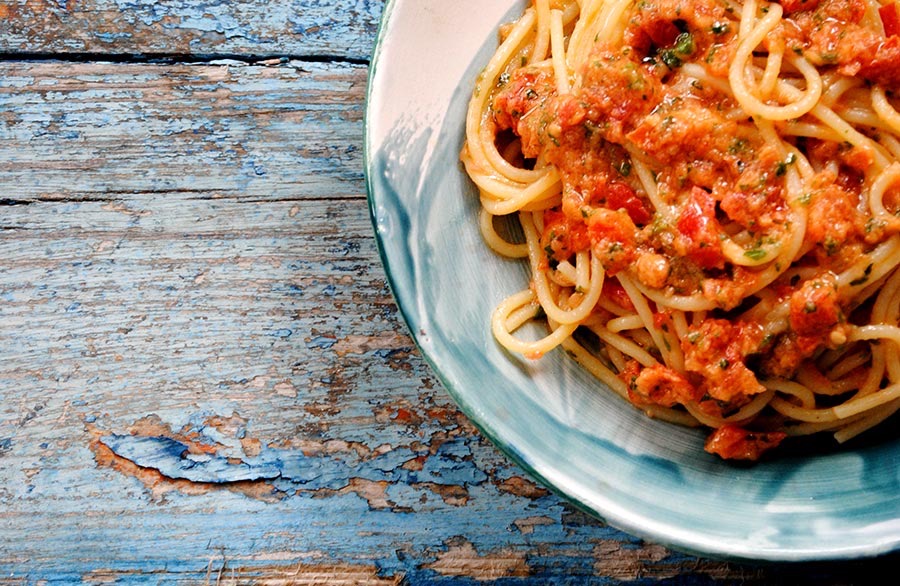
Pesto pantesco (yes, it’s a thing)
Pesto pantesco is a raw, mortar-made tomato-and-almond sauce from Pantelleria. It sits in the same family as Sicily’s pesto alla trapanese, but it’s distinctly pantesco because it includes Pantelleria capers and often leans on oregano or marjoram (sometimes alongside basil, sometimes instead). The capers weave a savory, briny hum through the tomato sweetness and almond creaminess—brighter, saltier in the best sense, and unmistakably Pantelleria.
At home: pulse ripe tomatoes, blanched almonds, a small clove of garlic, well-rinsed Pantelleria capers, and oregano or marjoram with olive oil. Keep it coarse, not smooth. Toss with short pasta, spoon over grilled fish, or smear on bruschetta. If you know pesto alla trapanese, you’ll taste the difference the moment the capers arrive.
Five essential foods and flavors of Pantelleria
- Capers of Pantelleria (IGP): Salt-cured buds with floral, briny intensity. Use in salads, sauces, with fish, roasted vegetables, and as a quick fry-topping.
- Insalata Pantesca: The island in a bowl—potatoes, onion, tomato, olives, capers, oregano/marjoram, olive oil, red wine vinegar.
- Pesto pantesco: Tomato-almond-caper sauce with island herbs; a raw, vivid staple.
- Pantelleria lentils: Tiny, earthy, quick-cooking; finish soups with capers and herbs for a briny lift.
- Zibibbo and Passito di Pantelleria: The island in a glass—see below.
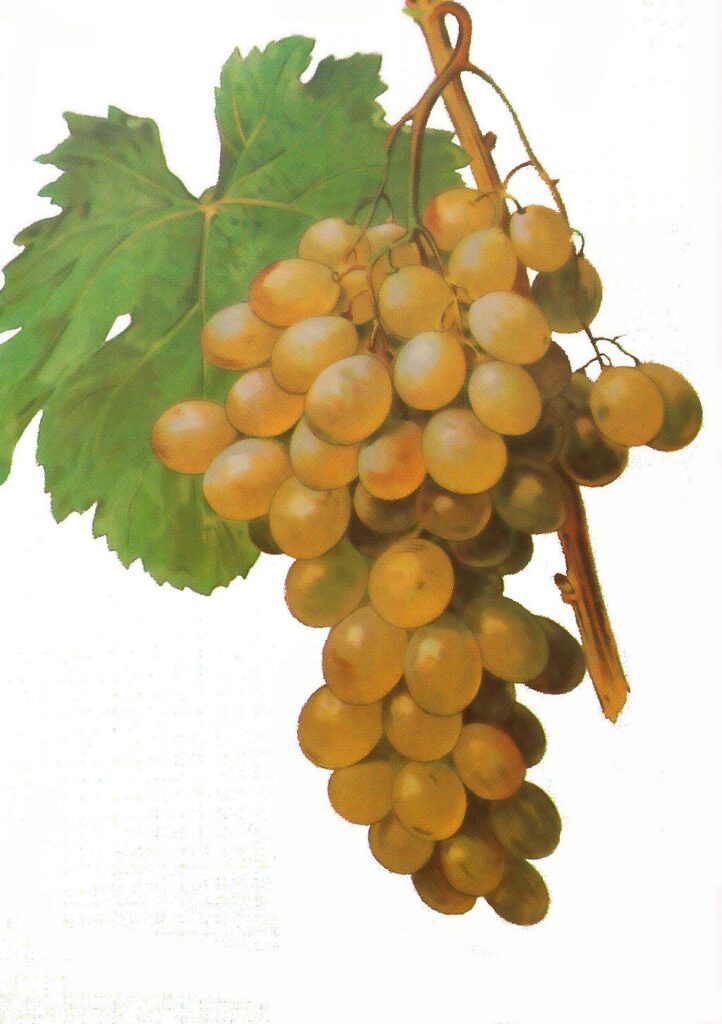
Zibibbo: the dry, saline side of Pantelleria
Zibibbo is the island name for Muscat of Alexandria, probably arrived via North Africa; the word is linked to the Arabic for “raisins.” On Pantelleria, vines grow low in the alberello pantesco method—a bowl-shaped bush that hugs the earth, protects fruit from wind, and conserves precious moisture. This traditional training is recognized by UNESCO.
Dry Zibibbo is too often overlooked. Expect citrus peel, orange blossom, and a brush of Mediterranean herbs on the nose; on the palate, it’s dry, saline, and faintly pithy—in a refreshing way that makes food taste more itself. Pair it with Insalata Pantesca, grilled vegetables with oregano, and simple grilled fish finished with a spoon of capers.
Passito di Pantelleria: sunlight saved for later
Passito isn’t just “a sweet wine”—it’s a technique. Zibibbo grapes are sun-dried on mats or racks so water evaporates and flavors concentrate. Winemakers then ferment fresh must and add some of those dried grapes back into the fermenting wine. The result should be rich but never cloying—apricot, candied orange peel, fig, honey—balanced by acidity and a whisper of salinity that keeps the palate awake. Pair with almond cookies, aged cheeses, ricotta with orange zest and honey, or even a square of dark chocolate.
How to bring Pantelleria home this week
• Buy the best salt-packed Pantelleria capers you can find, rinse well, and taste them solo so you learn their voice.
• Make Insalata Pantesca once “classic,” then play—add green beans in season or fold in good oil-packed tuna.
• Try pesto pantesco and notice how capers and island herbs distinguish it from Sicilian pesto alla trapanese.
• Seek out dry Zibibbo for your table; keep Passito di Pantelleria for a small glass after dinner.
Related posts on Flavor of Italy
These Flavor of Italy posts pair perfectly with Pantelleria—capers, Sicily, Sicilian food, and volcanic-island wine culture:
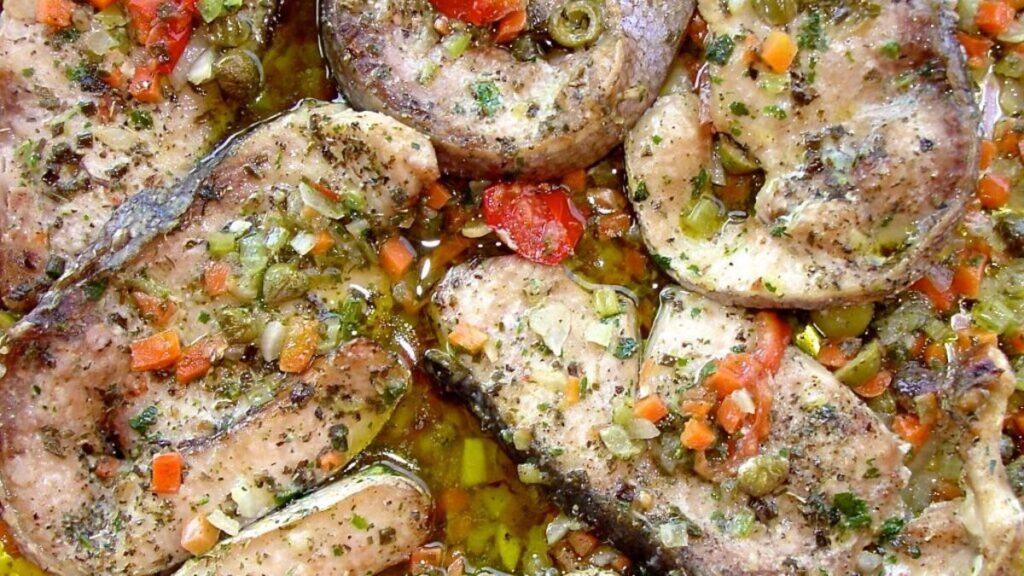
• Baked Fresh Anchovies with Capers & Parmesan Cheese — recipe: https://flavorofitaly.com/fi-recipes/baked-fresh-anchovies-with-capers-parmesan-cheese/
• Steamed Cauliflower with a Balsamic, Caper & Anchovy Dressing — recipe: https://flavorofitaly.com/fi-recipes/steamed-cauliflower-florets-with-balsamic-caper-anchovy-dressing/
• Baked Fresh Anchovies with Herbed Breadcrumbs
• Sicilian Food & the Monsù Cuisine — podcast & history: https://flavorofitaly.com/flavor-of-italy-podcast/sicilian-food-the-monsu-cuisine/
• Eating Your Way through Sicily — podcast & travel ideas: https://flavorofitaly.com/flavor-of-italy-podcast/eating-your-way-through-sicily-podcast-episode-14/
• The Best Palermo Street Food — guide: https://flavorofitaly.com/trips-travel/italian-regions/sicily/the-best-palermo-street-food/
• Sicily — region hub with articles and guides: https://flavorofitaly.com/trips-travel/italian-regions/sicily/
• Exploring Sicily’s Mount Etna Wines — volcanic terroir deep dive: https://flavorofitaly.com/flavor-of-italy-podcast/wine/exploring-sicilys-mount-etna-wines/
• “Design Your Italy” Travel Planner — volcanic islands, Pantelleria mention: https://flavorofitaly.com/flavor-of-italy-podcast/italy-travel-planner/
• Sartù Baked Stuffed Rice — Sicilian & Neapolitan Monsù classic: https://flavorofitaly.com/fi-recipes/sartu-baked-stuffed-rice-a-sicilian-neapolitan-monsu-cuisine-classic/
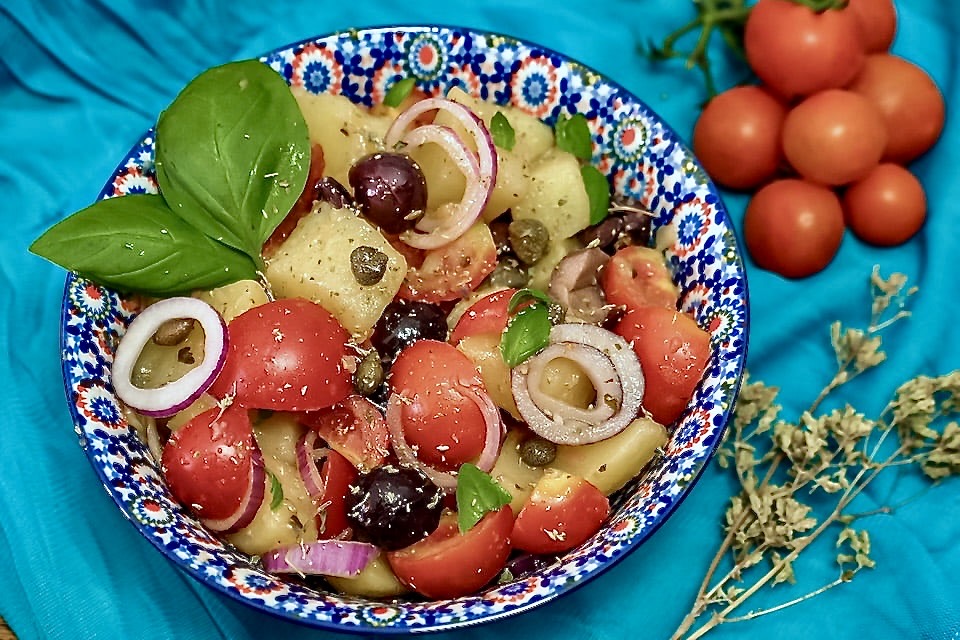





Please leave your comment here. Your feedback is important!